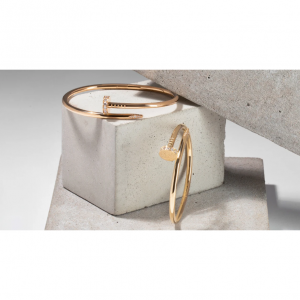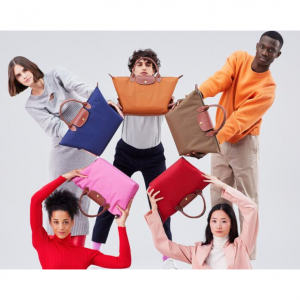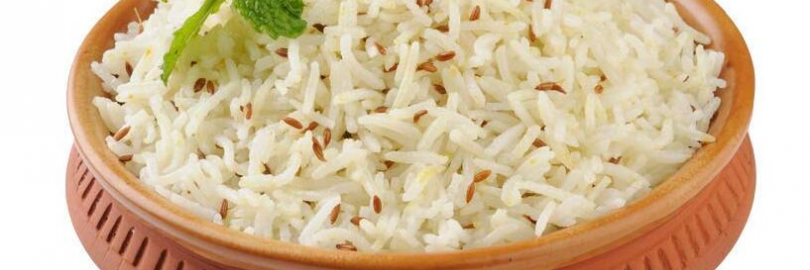
20 Best Asian Rice Brands in the World, Ranked 2025 (From Japan, Thailand, India, China, Korea etc.);
- Rice, one of the most popular foods in the world, is to be found in the daily meals of over 3.5 billion people who depend on rice for more than 20% of their daily calorie intake. That’s about half the world population!Rice is a staple food in 39 countries, with Asia having the highest consumption rate in the world, followed by Latin America. But what are the best types of rice to choose? There are many different types, such as white or brown rice, red, sprouted, wild, mixed, basmati, jasmine, and sushi rice, each with properties and tastes more or less suitable for specific dishes. We’re here to help you choose – to take you through our favorite, most trusted brands, and to let you in on the features we love the most about every single one of them. Asian rice is the most popular because it's versatile, inexpensive, and can add a lot to your meal. Whether you use an instant pot slow cooker, electric pressure cooker, electric rice cooker, or cook it on the stovetop, steamed jasmine rice or any rice recipe can be delicious.So, this article will introduce the best rice brands that match Asian cuisines like Japanese, Thai, Indian, Chinese, Korean and more!
Three Main Classifications of Rice
Before we delve deeper, let’s take a quick look at the overall variety of rice out there.
In Asia, rice is divided into three categories:
Indica (xiān) rice:
Rice made from indica-type non-glutinous rice is called indica rice.
The particles are finer and longer, some are flat and easy to break.
When cooked, the rice is fluffy and doesn't stick together.
It is more often labeled as medium or long grain rice.
Japonica (jīng) rice:
Rice made from japonica-type non-glutinous rice is called japonica rice.
The particles are short and round, not easy to crack or break.
When cooked, this rice tends to be sticky and moist. It's perfect for dishes that require stickiness, such as sushi.
Glutinous (nuò) rice:
Glutinous rice also called sticky rice, sweet rice or waxy rice,
It is a type of rice grown mainly in Southeast and East Asia, which has opaque grains, very low amylose content, and is especially sticky when cooked.
Glutinous rice is also divided into indica and japonica, that is, there are short-grain, medium-grain and long-grain glutinous rices.
In the international market, the rice varieties can be classified into 3 groups
—long-grain, medium-grain, and short-grain—
based on their length-to-width ratio when cooked.
Long-Grain Rice
The grains of long-grain rice can be recognized immediately by their lengthy and cylindrical-shaped appearance.
They are roughly 4-5 times as long as they are wide, and they are the most commonly used rice. When cooked, the rice stays fluffy yet firm, and the grains are separated and it is not sticky at all.
Examples of long grains include Jasmine rice, Basmati rice, Mexican rice, traditional American long-grain white or brown rice, and European-grown style of rice.
Medium-Grain Rice
Medium-grain rice is usually about 2-3 times longer than it is wide. When cooked, the grains are tender, moist, slightly chewy and they tend to stick together a bit.
Medium-grain rice is not as plump as short-grain rice, and is not as starchy either.
Examples of medium-grain rice include Bomba rice, Arborio rice, and most of Asian-style rice such as Chinese-style rice.
Short-Grain Rice
Short-grain rice is the japonica (jīng) rice mentioned above. It is short and plump. The rice grains cling together without being mushy when properly cooked. The grains have a higher starch content than regular rice. Short grain rice from Japan, Korea, China is the best!
It is also common where medium-and short-grain rice are combined into the same category, which can make for some confusion. Short-grain rice will be almost as wide as it is long when it is cooked. Medium-grain rice will be a little bit longer than it is wide, and long-grain rice is slender and long.
Best Asian Rice Brands
Rice is one of the staple foods that most people in and around Asia eat regularly. The richness of the rice grains and their taste will make you want to ask for more.
So what are the best rice varieties in Asia? What are the best rice brands for cooking and pairing with Asian meals?
Top 5 Best Japanese Rice Brands 2025
Top 4 Best Jasmine Rice Brands 2025
Top 4 Best Basmati Rice Brands 2025
Top 6 Best Chinese Rice 2025
Top 2 Best Korean Rice Brands 2025
In fact, here's a great money-saving tip:
In fact, you can save up to 100% on online shopping at home and abroad!
Such a high amount of cash back comes from Extrabux (What is Extrabux?), it also offers coupon codes and recent promotions, and brings together 10,000+ sites (US, China, UK, Japan, Australia , Germany, France, Italy, etc.).
Just sign up for an Extrabux account and earn exciting cash back every time you place an order via the relevant link. Sign-Up Bonus: Join for FREE & Earn $20 Welcome Bonus today! Then earn $5 Friend Referral Bonus!
Whether you are buying cheap domestic products, international luxury goods, or buying mobile phones, computers, refrigerators, washing machines, clothes, shoes, bags, mother and baby products, snacks, drinks, or booking air tickets, hotels, car rentals, or registering services and memberships , you can save money on all related purchases - save $1,000 a year!
1. Japanese Rice
What is Japanese Rice?
What types of rice are used in Japanese cuisine? For Japanese cuisine, you can find 2 basic forms of rice that are prevalent and both are considered short-grain cultivars of Japonica rice.
The first type of rice is uruchimai (粳米), known as the Japanese short-grain rice or ordinary rice, or Japanese rice in short. That’s the rice you use to make sushi, rice balls, and everyday Japanese dishes. It is also the type of rice being used to make sake and rice vinegar.
The second one is mochigome (餅米), also known as Japanese short-grain sweet rice or glutinous rice. It is commonly used to make mochi rice cakes or traditional wagashi sweets.
Therefore, the Japanese rice we often say mainly refers to the variety of japonica rice (ジャポニカ米), which is a plump short-grain rice.
It is sticky, firm in texture and slightly sweet.
Because of its high proportion of starch and moisture content, cooked grains are clingy and sticky enough to easily be picked up with chopsticks. This is the rice served at every Japanese meal.
Where to Buy Japanese Rice?
You can buy Japanese rice from Japanese or Asian grocery stores. Most of the major grocery stores like Walmart, Whole Foods, Target and local chains also carry some common brands which you can find in the Asian aisle. Alternatively, you can buy Japanese rice from online grocery stores or Amazon.
| Other online shops include: |
|
Top 5 Best Japanese Rice Brands 2025
There are many different brands of rice out there that can be used for Japanese cooking and for making sushi. In terms of quality, the Koshikikari variety is the most preferred Japanese rice.
Here are some of our recommended brands of Japanese rice:
#1. Shirakiku Rice, Koshihikari
($38.15, 15 Pound, Amazon)

What is Koshihikari? Koshihikari (Japanese: コシヒカリ, 越光, Hepburn: Koshihikari) is a japonica rice variety created in Japan and is now the most grown locally.
If there is one type of rice that best represents sushi and Japanese culinary arts, it is Koshihikari rice (often called “Koshi rice”). Koshihikari rice is considered a super-premium short grain rice that is unique in its characteristics, with a firmness, consistency, aroma, and a natural sweetness that is without peer in the rice world.
Slightly off white, firm yet creamy, this low glycemic rice has attributes that make it perfect for sushi or general consumption, if one is so inclined.
Over time, this rice still manages to reach all over the world and is now grown in the United States. California and Tennessee are two states that have been successful in growing Koshihikari, and even though it may not be grown in Japan, the American variety of rice manages to retain many of its qualities that make koshi rice such a unique product. Being grown locally, it is less expensive and more readily available than the Japanese variety.
Shirakiku Koshihikari, which is Koshihikari variety from California.
This is the first brand that most Japanese people in the US think of when shopping for the best Japanese rice.
It is also a favorite of most chefs and restaurants. Because the high end makes it expensive.
It is known as the "King of Rice" for its sweet aroma, great taste, fluffiness, and sticky texture. For sushi preparation and daily meals, Koshihikari is the very best there is. Look out for the label ‘shinmai‘ 新米 or ‘new crop’ on the rice bags for the freshest crops.
Koshihikari is also easy to cook. It can be steamed or cooked with a rice cooker.
#2. Tamaki Gold Rice
($44.99, 15 lbs, Get Up To $10 Cash Back with SayWeee)

In second place is Tamaki Gold Rice, which delivers authentic Japanese rice taste and texture every time. It's popular in many recipes, whether it's sushi rolls or other Japanese dishes.
It is also a Koshihikari product grown in California, but one major difference is that it is a Japanese owned and operated company.
Tamaki is known for its excellent quality and many customers swear by the taste and texture of this brand.
This is a short-grain rice variety that is made with modern milling technologies combined with traditional farming techniques, and is packaged in bags that are "nitrogen flushed and sealed."
The result is a consistent quality of rice with a super rich flavor.
The rice grains have a silky texture before cooking. But once they're cooked, they turn into fluffy, mouthwatering textured grains. The short-grained variety tends to have a firmer exterior but a soft, more chewable interior. In other words, a perfect blend.
Also, Tamaki is usually more affordable compared to some other sushi rice brands from Japan. So, if you're on a budget but still want the fillings and seasonings for your sushi rolls to stand out, this is the rice brand for you.
#3. Tamanishiki Super Premium Short Grain Rice
($49.06, 15 Pound, Amazon)
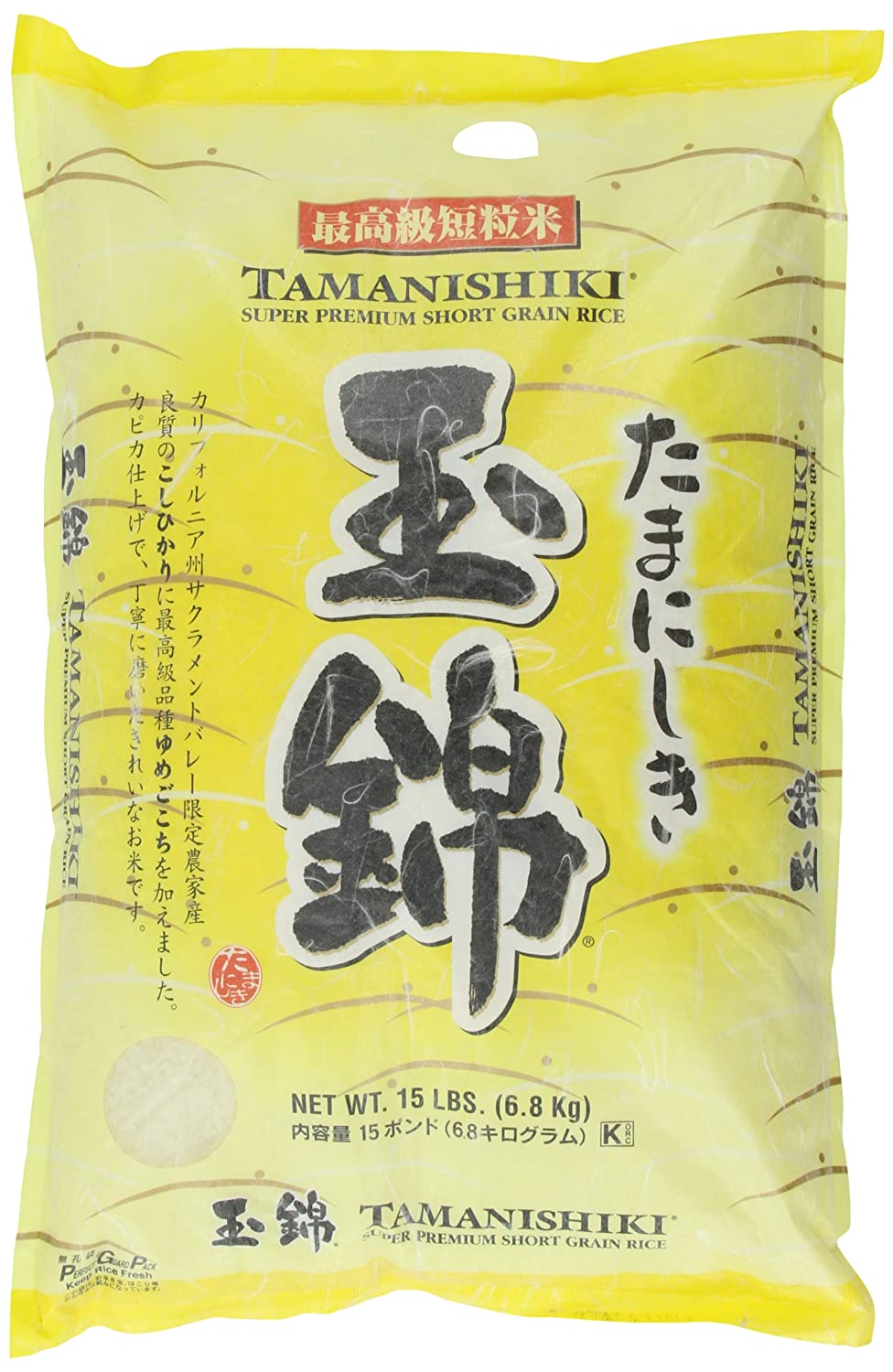
Tamanishiki rice is a high-quality short-grain brand that is one of, if not, the best for the creation of sushi.
Harvested from the Plantations in Montana farms, California, this rice brand produces a mix of Koshihikari rice and Yumegokochi rice.
Tamanaishiki rice has no added preservatives or inorganic fertilizers and is one of the healthiest brands on the market. It's also low in fat and cholesterol, gluten-free, and perhaps most importantly, is renowned for its authentic, mouth-watering taste.
The rice becomes sticky when cooked, making it perfect for your sushi. You can use it for sushi rolls, Charishi, and nigiri sushi.
The wonderful flavor of Tamanishiki rice is enhanced thanks to the Musenmai process it goes through to help preserve the taste of the rice once it has been cooked. It adds a lot of savory and umami flavors, which means it goes well with just about any sushi roll.
Head to some of the world’s best high-end medium-grain restaurants and you will find that the chefs there use this particular type of premium quality rice.
While it may be a bit pricey, Tamaishiki rice is worth every penny for its deliciousness, versatility, and ease of cooking.
#4. Lundberg, Organic California Sushi Rice
($12.03, 907 g, Get Up To 5% Cash Back with iHerb)
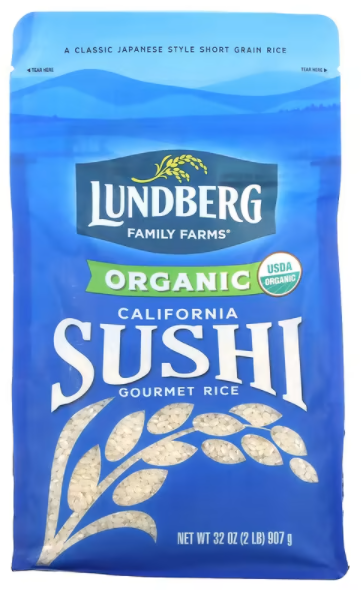
Since 1937, Lundberg Organic Farms has been producing some of the highest quality sushi rice in existence.
Although it is a Japanese brand, the rice is produced in the United States. This sushi rice is completely organic and USDA verified. Being gluten-free, this rice is a great choice for all diets, especially vegetarians. In addition, this rice has very little cholesterol, so it can provide more nutritional value, such as dietary fiber and protein.
Organic rice from Lundberg Family Farms is slightly sweet, sticky, fluffy and soft. Unlike other short grain rice, it doesn't have any funny smell or starchy fumes.
It's the perfect combination of mild and nutty flavor that you get when you put it in your mouth. If you're making sushi for the first time, try Lundberg organic rice to get the results you want.
For more affordable choices, you can try California-grown medium grain or hybrid variety that is widely available in the U.S. Botan Calrose, Nishiki, and Kokuho Rose are some of the standard brands out there.
They may not be the best, but they are usually cheaper in price.

It is worth mentioning that the most popular among Asian Americans are Kokuho rice (yellow packaged, 黄国宝) and Kokuho Rose sushi rice (red packaged, 红国宝).
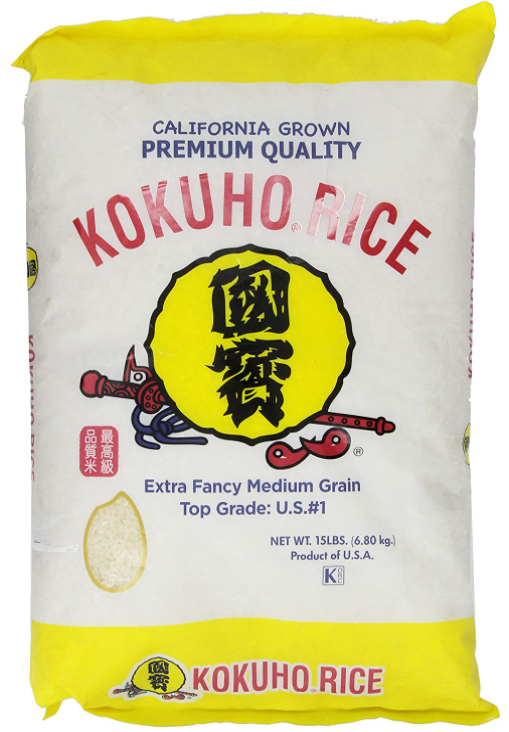
Kokuho Rose is a Calrose rice with a soft, moist texture and a slightly sweet aftertaste. Kokuho (yellow) is very similar to Kokuho Rose, just less sticky, less sweet, and less expensive.
Some find that short-grain rice is not to their liking. If this is the case with you, Kokuho medium-grain rice may be what you’ve been searching for. It tends to offer more complex flavors and has a harder quality than many of its short-grain counterparts.
This is a brand of sushi rice that produces medium grain rice, first grown by Koda Farms in 1963, but currently grown in California, USA.
This rice is great for beginner sushi makers. Note again, if you want higher quality, please choose red packaging, if you want to save cost, please choose yellow packaging.
#5. Kokuho Rose Rice
($9.995 lb, Get Up To 5% Cash Back with Bokksu Market)
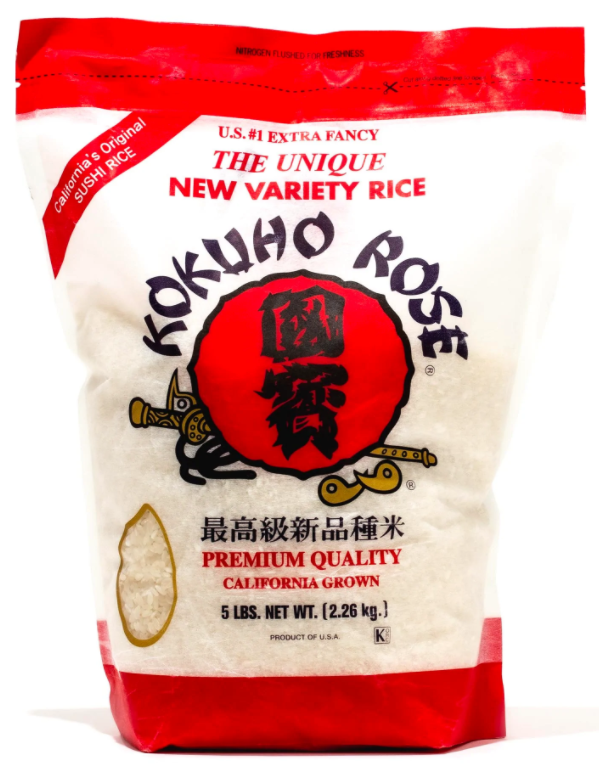
Japanese-grown rice
Most of the sushi rice available in supermarkets is grown in the United States, and although the packaging may have a Japanese logo on it, it is not grown in Japan at all.
If you want Japanese-grown rice, here are some options that might be available in Japanese grocery stores but aren't readily available.
Akitakomachi Japanese Rice
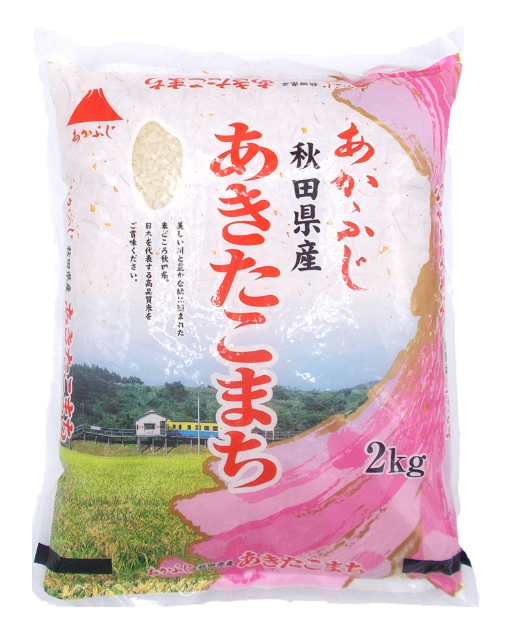
Delicious rice brought up in Akita known as "Akitakomachi" over the years in Japan.
This rice has a sweet flavor and springy texture. Other features of this rice include its stickiness and not-so-pleasant scent and its ability to retain size and shape when cooked and even after cooking. Akitakomachi rich has a very distinct taste that differentiates it from the others. The grains are also tiny. This rice is perfect for sushi, rice balls, or eaten alone as a meal.
Toyama Koshihikari Rice
Japanese grocery store Nijiya Market sells Koshihikari rice from Toyama, Japan.
Toyama Koshihikari which was cultivated by the cold and freshwater flowing from Mt. Washiwa of the Northern Alps is top-quality rice. Please enjoy this taste with excellent stickiness and sweetness that has a blessing of nature.
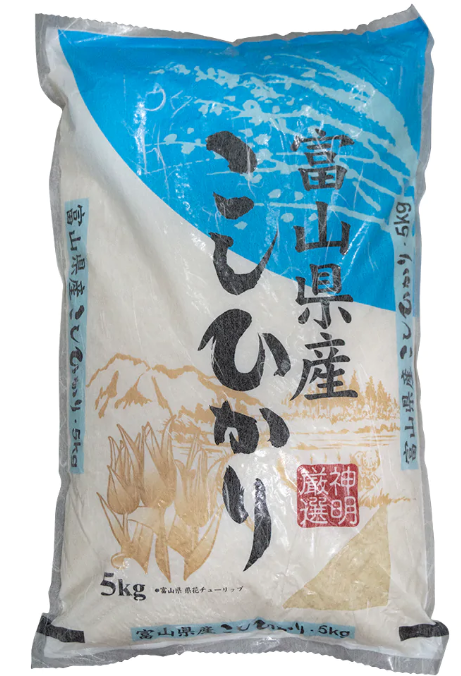
Ubara Rice, Extra Premium Japanese White Rices
UBARA rice is used by Michelin chef and many other high-end sushi restaurants. Comparing to other high quality short grain rices such as Koshihikari and Akitakomachi. UBARA has larger grain size, and better texture - soft yet and chewy.
One interesting fact about this rice is that it retains its taste even when cold. That is to say, if you eat it when it’s hot, it’s delicious, and even though you eat it when it gets cold, it is still delicious.
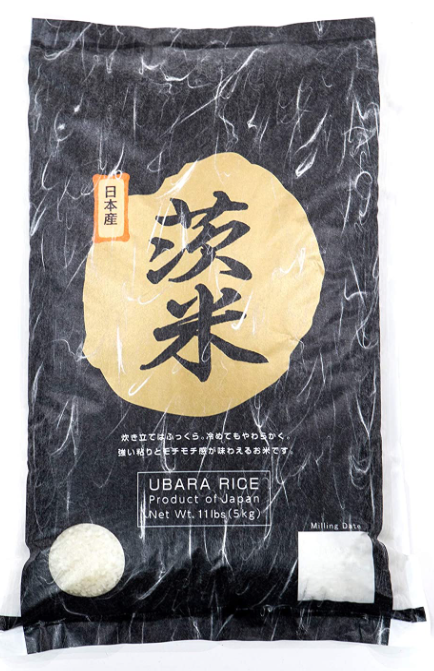
What is the highest ranked Japanese rice?
The three top-ranking rice is currently 山形県産つや姫 (Yamagata Kensatsuyahime) 、魚沼コシヒカリ新潟県 (Uonuma koshihikari Nigata-Ken)、北海道産ななつぼし (Hokkaido Sannanatsuboshi) respectively and 新潟県コシヒカリ(Niigata-Ken Koshihikari) tying with 千葉県ふさおとめ (Chiba-Ken Fusaotome) at fourth place.
These rice will cost more than others due to the popularity.
1. 山形県産つや姫: つや姫 Tsuyahime
Tsuyahime’s roots lie in the legendary rice grown by Shonai farmer Abe Kameji: “Kameno-o.” The genes of Kameno-o, from which “Koshihikari” brand rice also originated, have been inherited by Tsuyahime. This "new texture" that combines firm graininess and moderate stickiness. Distinct grain size, white sheen, flavor, aroma, and texture make rice itself a feast.

2. 魚沼コシヒカリ新潟県:
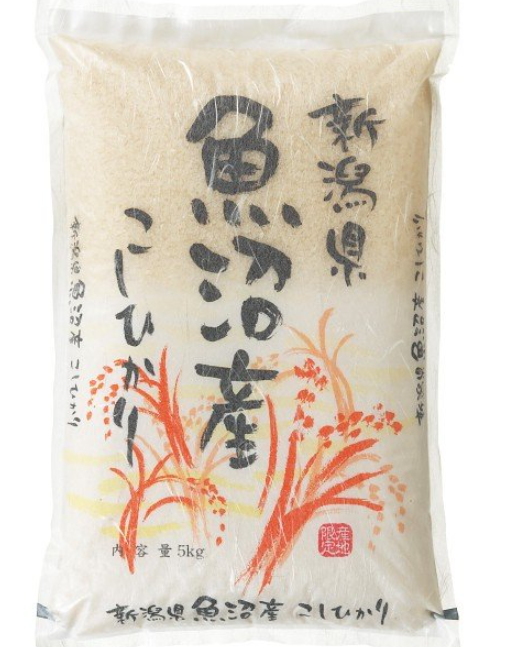
3. 北海道産ななつぼし : Non-wash rice cultivated in Hokkaido
Nanatsuboshi is one of the high quality short grain rice crafted in Japan. IRIS white rice is carefully harvested and directly imported from the fertile ground of Hokkaido, Japan. Each package contains five individually airtight sealed bags of pre-measured 2 cups of rice and each bag of rice delivers the best flavor, taste and texture without losing freshness every time. The fresh rice is great for sushi, fried rice, paella, bibimbap rice bowl or any other variety of rice dishes.
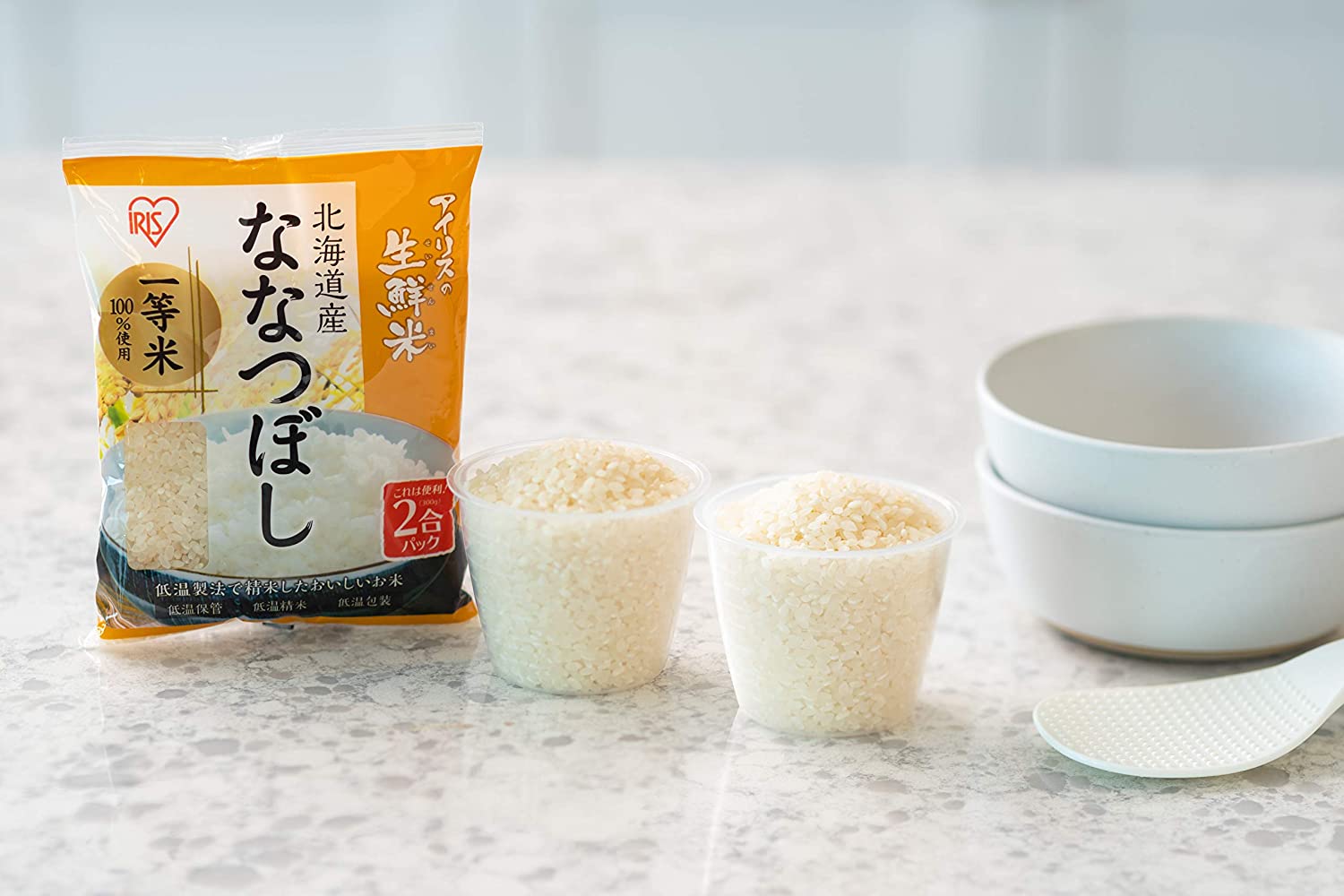
4. 新潟県コミヒカリ :
Traditional Koshihikari from Niigata Prefecture (from the womb). Coordinated rice that goes well with any dish. The flavor, texture, and freshly-cooked grain just called the king of rice will still shake the Japanese soul.
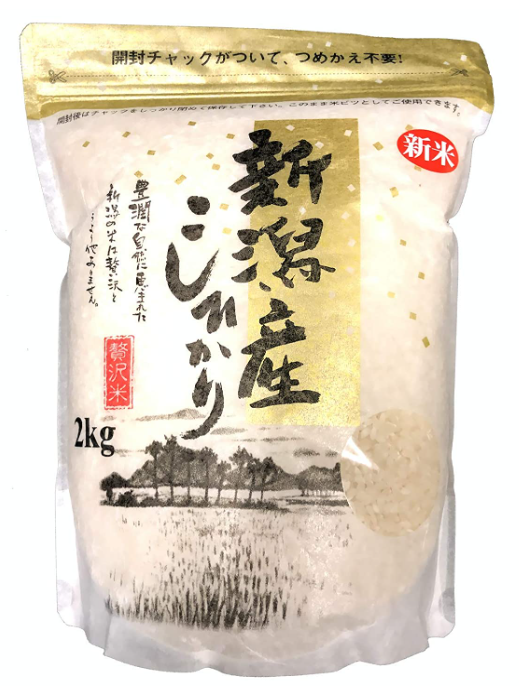
5. 千葉県ふさおとめ : Non-wash rice cultivated in Chiba Prefecture
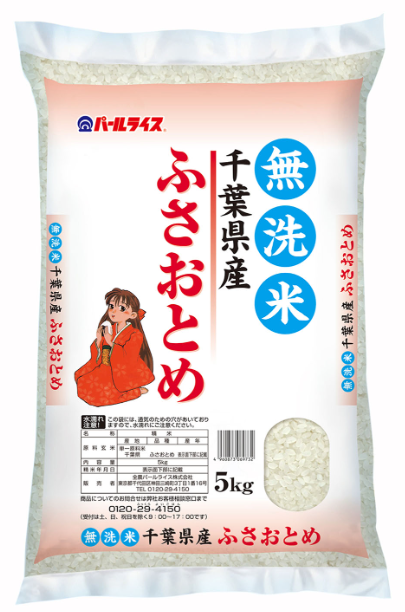
Japanese Rice FAQs
What’s the Best Short Grain Rice?
Short grain rice is best for sushi, although a medium-grain rice that’s sticky enough will do in a pinch. We recommend authentic Japanese Koshikikari short-grain rice for making sushi, although some of the Californian options above like Tamanishiki are good for sushi, too.
What about Calrose Rice?
Is Calrose considered Japanese rice? Calrose rice refers to the medium-grain rice that is grown in California. ”Cal’ as in a product of California, and ‘rose” indicates medium-grain rice.
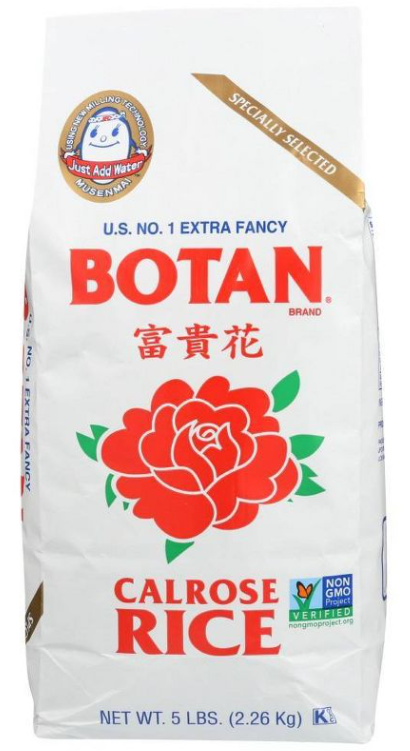
Developed by the Japanese-Americans in 1948, they have been used as reasonably convenient and inexpensive rice of choice for many years in the US. They are not true Japanese rice, but they have a well-balanced flavor with moderate stickiness and are robust enough that most people and Japanese restaurants in the US use them for sushi and other Japanese dishes.
Can I Use Jasmine Rice for Sushi?
We do not recommend using jasmine rice at all for making sushi. Jasmine rice has a drier texture and different flavors, and the grains don’t stick well together. Your sushi (or rice ball) will fall apart.
Can I Use Regular Rice for Sushi?Ordinary rice just isn’t suited for sushi, so you’re better off going for the real thing.
White rice, basmati rice, and jasmine rice lack the stickiness you need for your sushi roll to stick to itself.
Is Korean Rice a Good Substitute to Japanese Rice?
You can say both Japanese rice and Korean rice are pretty much the same. They are short-grain cultivars of Japonica rice and come with the same natural sticky texture once cooked. The differences are where the rice is cultivated and how the Japanese and Korean prepare them.
In fact, the Japanese played a role in importing rice to Korea that replaced many of the native Korean rice varieties.
So, the short answer is yes, you can substitute Japanese rice with Korean rice. It all comes down to personal preferences over brands and the origin of cultivation.
Jasmine Rice
What is Jasmine Rice?
Jasmine is one of the most popular types of white rice worldwide. It is typically long-grain rice unless it is “broken,” which means exactly what it sounds like.
It is named for its very distinctive aroma, which is nearly identical to the very fragrant Jasmine flower.Many people consider this rice the most fragrant available, but its aroma will dissipate as time goes by.When looking to purchase jasmine rice, try to purchase newer, fresher one with few broken grains and no obvious signs of exposure to moisture. A newly harvested jasmine rice may have a current year's "New Crop" sign on the package. Broken grains are smaller than whole grains and the two sizes won’t cook together uniformly. Final dish will likely be a mess of overdone and underdone if cooking with mix of broken grains and whole grains.
True jasmine rice is grown in Thailand and it’s often also called Thai Hom Mali rice or Thai fragrant rice.
Jasmine rice has been transferred to other farms around the world, but the further removed it is from its traditional growing grounds, the less signature aroma and flavor the rice tends to have.Therefore, in addition to Asian production areas such as Vietnam, Laos, and Cambodia, there are also farms producing jasmine rice in the United States.
Also, the texture and flavor will also depend on when in the year the rice is harvested. As an example, rice that is harvested in spring is going to be more delicately flavored, while rice harvested later in the year will have a more robust flavor.
Jasmine rice can be found in various forms, depending on the processing method. The least processed types are red, purple, and blue Jasmine rice, which are left in hulled form. When the grain is de-hulled, it becomes brown jasmine rice, and when it is milled to remove the germ and the bran, it becomes white jasmine rice.
The least processed rice types take a long time to cook and have a different texture, but they retain more of the nutritious value of the plant.
Most recipes using jasmine rice will ask for white rice. To cook it, We recommend using less water than regular white rice as jasmine rice is softer than other varieties, meaning it needs less water to become soft and fluffy and to stop it from becoming gummy.
This variety of rice pairs well with spices commonly used in Thai and Middle Eastern dishes. It’s often used to cook side dishes that are aromatic and lively and pairs well with poultry, fish, or vegetables.
The Best Places to Purchase Jasmine Rice
Despite the fact that Thailand is the primary producer, it is popular in countries all over the world. This has led to its cultivation in other countries and its inclusion on the shelves of many different supermarkets and health food stores in the United States and beyond.
If you’re shopping for jasmine rice at the grocery store, there are two places you can typically find it. It’s often found in the rice aisle with every other kind of rice and may also be included in the Asian section of your supermarket. Since this rice is similar to traditional white rice, it will often be sold in large containers of five pounds or more. If you are more interested in the exotic types of jasmine rice, the best options in your neighborhood are going to be Asian and ethnic food markets.
Fortunately, you can also order jasmine rice online, which is the best place to find the vast number of varieties available around the world. In addition to typical white or brown jasmine rice, you may find the more colorful purple jasmine rice and varieties from countries other than Thailand or the USA on the web.
Top 4 Best Jasmine Rice Brands 2025
#1. Asian Best Jasmine Rice
($52.72, 25 Pound, Amazon)

The best long grain jasmine rice on the market is Asian Best Jasmine Rice. The Asian Best brand is also known as the Red Elephant brand and it’s a staple in many Asian cooking households in the U.S.
What puts this rice at the top of our list is that the rice is only grown in the Isaan region of Thailand which helps to produce the distinctive aroma and texture.
This traditional Thai Hom Mali jasmine rice has the highest percentage of whole long-grains of rice, meaning they are not broken. This makes for more consistent cooked results and a reliable soft, fluffy texture.
Normally it is very budget-friendly, but if supplies are limited, perhaps because it is an imported product, it may become pricier. Our best recommendation is to simply keep an eye on the price and stock up when it’s conveniently low.
It’s available in two different sizes, so you can select whichever best suits you and your family. It also fits perfectly into most diets, being low-sodium, low-cholesterol, and low-fat.
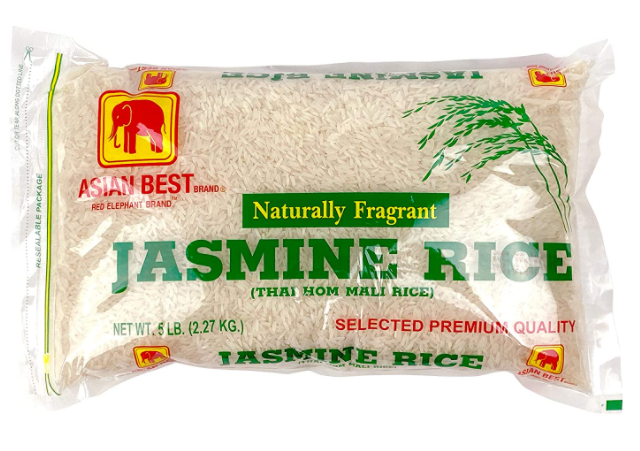
#2. Three Ladies Jasmine Rice
($16.99, 10 lbs, Get Up To $10 Cash Back with SayWeee)

Our second recommendation is Three Ladies Jasmine Rice. It is popular among users and is known as the most fragrant and versatile brand of jasmine rice on the market.
It has a wonderful smell and flavor even in dry form, and it becomes a meal simply by adding salt, pepper, and butter.
One of the first things you may notice about the Three Ladies rice is that it is grown in Thailand, making it a good option if you’re looking for something as authentic and traditional as possible.
Unlike some of the other options for the best jasmine rice brand, this comes in only one size but offers plenty to work with at five pounds per bag. The manufacturer also offers other grains, such as brown jasmine, sanpatong sweet rice, and broken jasmine rice.
The long grain structure is extremely versatile and suitable for an array of meals. As the rice comes from a fresh crop, the grains are slippery and cook very fast, maintaining the flavor during the process.
The rice comes vacuum-sealed! This isn’t a traditional way to pack or store rice, but shouldn’t affect the food.
However, this is one the major importers from Southern Asia to California. As such, it has a very competitive price.
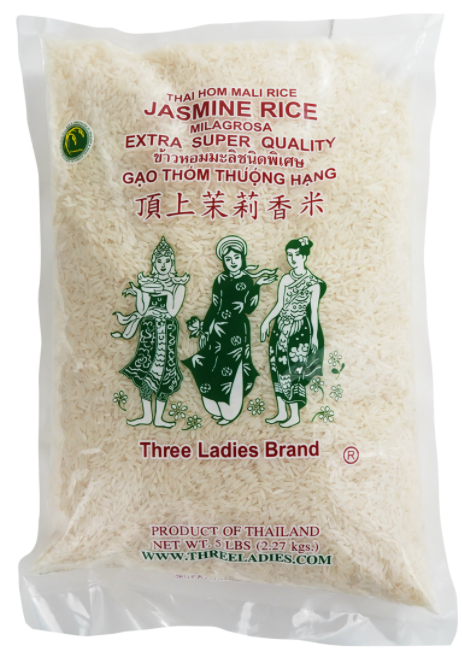
#3. Dynasty Jasmine Rice
($17.99, 20 Pound, Amazon)

Our third recommendation is Dynasty’s Jasmine Rice. It’s budget friendly because you can buy it in bulk. You can get their Jasmine rice in multi-packs, or in single packages up to twenty pounds.
This jasmine rice has a beautiful fragrance that makes it a perfect accompaniment for a variety of meals, especially within Asian cuisine so whether you are an avid chef or learning to cook, you cannot go wrong with this option.
What makes this such a fantastic choice is that it is 100% natural and organic meaning that it contains no artificial ingredients or flavoring.
This rice has been imported from Thailand so you can be assured that it is the best quality and that it will maintain its beautiful flavor.
This jasmine rice is also very good for fried rice, when the cooked rice is left in the refrigerator for at least 2 hours.
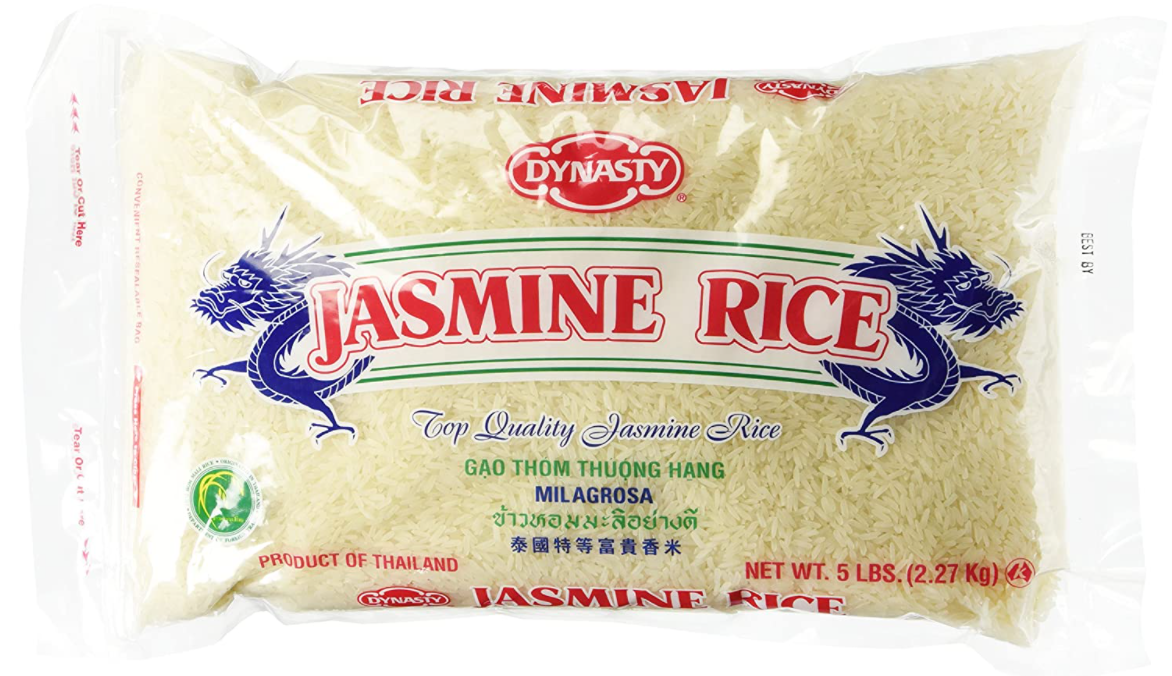
#4. Pride of India: Thai White Jasmine Rice
($14.99, 3.3 Pound, Amazon)
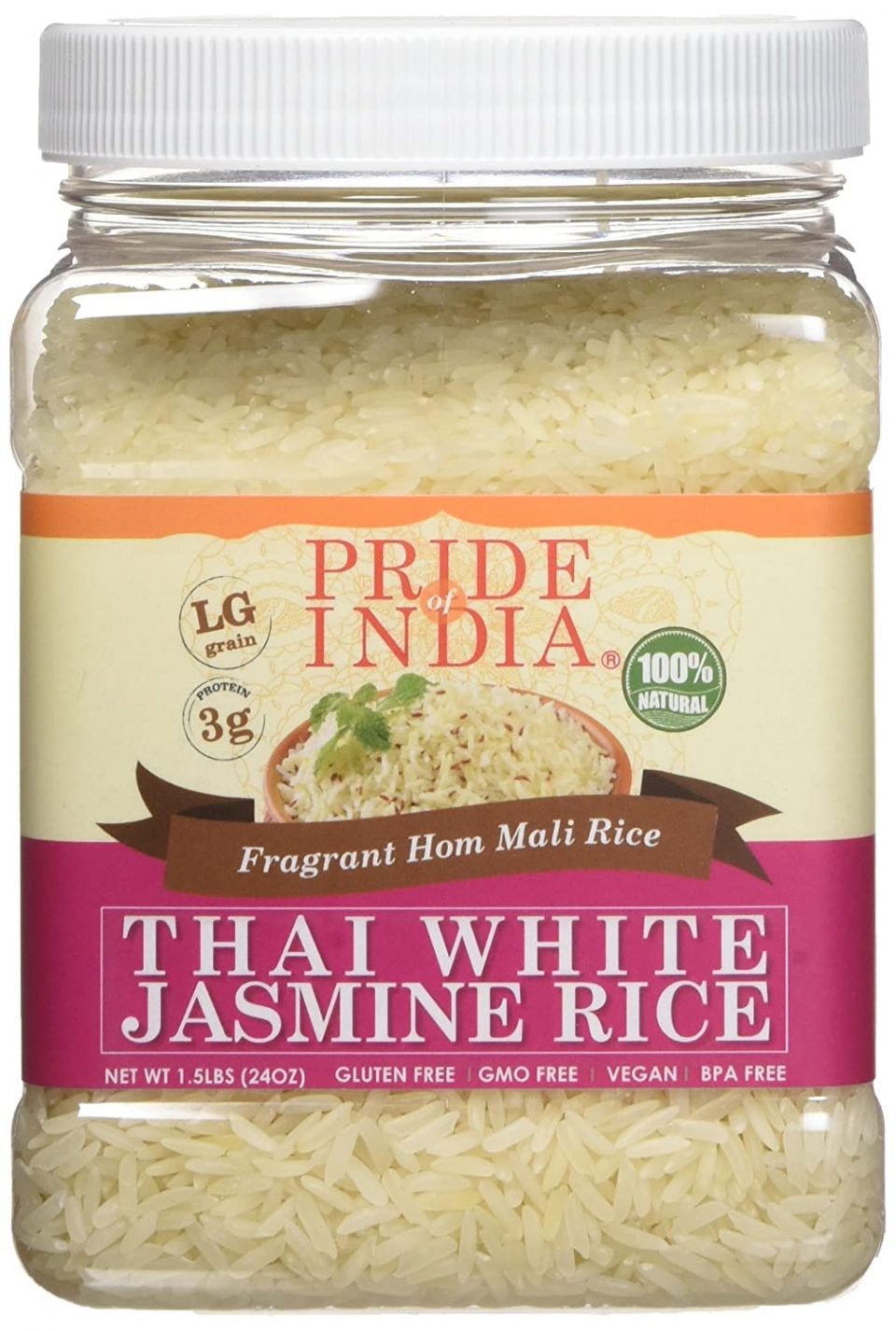
Our fourth choice is the Pride of India Thai White Jasmine Rice which is made from 100% natural Thai Hom Mali rice.
The grain is shorter and thicker than other white rice varieties, but it is also softer and more aromatic. The rice can be used for Thai dishes and other types of food, as it contains lots of beneficial plant compounds. The producer recommends using this jasmine rice in shrimp fried curry and combining it with spring onion, minced garlic, green chilies, carrots, green peas, prawns, and seasoning.
It is very aromatic and silky when cooked with just a hint of natural sweetness to the grain. To protect the long-term freshness of the rice, this brand packages their rice in food-grade, BPA-free PET containers rather than flimsy plastic bags.
But this means it may be one of the pricier options out there. You could probably find almost as good rice for a slightly lower price.
It is one of the most sustainable choices on our list, making it an ideal choice for those who want to select the best organic jasmine rice.
Jasmine vs Basmati
Jasmine rice is also very similar to basmati rice, as both are known for their long grains and fragrant aromas and are both popular in many Asian cuisines.
Jasmine rice comes from Thailand and is more popular in Thai and Taiwanese cooking. Basmati originates from the Himalayas and is more commonly found in Indian cuisine.
Also, basmati rice is usually aged before it hits the shelves.
Basmati also has a stronger, nuttier aroma and flavor than jasmine rice.
However, even though the two are different, many people use them more or less interchangeably with few downsides. It all comes down to personal preference and how much you value authenticity.
Differences Between Jasmine And Basmati Rice
Many people are not sure about the difference between jasmine rice and basmati rice, so now let's take a moment to explore the unique qualities of both.
Jasmine Vs White Rice
Jasmine rice is often compared to plain white rice. They’re similar in price and availability, though they taste and smell quite different.
Plain white rice can be found in short, medium, or long grains, and the consistency when it’s cooked can range from light and fluffy to very sticky and glutenous.
Each type of white rice is unique. The only thing that remains consistent is the fact that it is white.
Jasmine rice, on the other hand, is long-grain rice and it is commonly found in both white and brown varieties, but it can even come in specialty colors such as purple, red or black.
The true signature of jasmine rice is the fragrance it is named for. Great Thai jasmine rice will fill an entire home with a floral aroma as it’s cooking, whereas white rice simply smells like a grain.
Is Jasmine Rice Sticky Rice?
No. Jasmine rice lacks the gluey, glutenous texture that would make it a sticky rice.
It is a long-grain rice, but some brands use broken grains, which does give a stickier texture. Jasmine rice should be fluffy and light, but if you use more water and cook it for longer your jasmine rice will become stickier.
Is Jasmine Rice Gluten Free?
All jasmine rice is gluten free! Rice can be starchy, but does not naturally contain gluten.
Some brands, however, deal with other grains as well, and can contaminate their rice with gluten. Cross-contamination is always a risk in facilities handling gluten-free as well as non-gluten-free foods.
Any brand that is “certified” gluten free will not be processed in a gluten-handling facility.
Basmati Rice
In India, where basmati originated, this rice is considered part of the national heritage; in 2016 it was granted Geographical Indication (GI) status, similar to the European Union’s protection for Champagne and Parmigiano-Reggiano.
Indian home cooks prize basmati for its fragrance as well as the extreme elongation and slenderness of the cooked grains. But in the United States, it’s one of several choices of long-grain white rice on supermarket shelves, so it’s easy for home cooks to overlook this variety.
This long-grain white rice from India and Pakistan is commonly found in biryani and pilaf dishes, and it is also a trusty sidekick of curries.
Basmati, which derives from the Sanskrit word for “fragrant”, is also known for its fluffy texture. This is because each of the skinny grain remains separate from each other, allowing curries and sauces to coat each grain more extensively. Flavours-wise, basmati rice is light and nutty.
Are you ready to try a new type of rice that is fluffy and soft, rather than sticky and moist like most other rice? When you choose the best brand of basmati rice, you can experience a whole new world of dishes that aren’t possible with jasmine or sticky rice.
Looking for the best basmati rice brands in India?
Studies report that as all types of rice age, the grain undergoes structural changes and its cooked texture becomes less sticky, smoother, and firmer. Starch granules become tighter while surface proteins on the rice grains become oxidized, creating a shell-like exterior that is more resistant to absorption, helping prevent the grain from becoming mushy and controlling how much it can expand. While raw basmati is naturally long and slim, aging improves this trait so that as the rice cooks, it expands lengthwise and not widthwise. We measured the width and length of a small sample of each rice before and after cooking and found that the aged rices were longer and thinner and grew lengthwise by a higher percentage during cooking. Low-ranked rices, which were not aged, were shorter and fatter.
Top 10 Best Basmati Rice Brand
#1. Royal White Basmati Rice
($21.64, 20 P, Get Up To 4% Cash Back with Walmart )
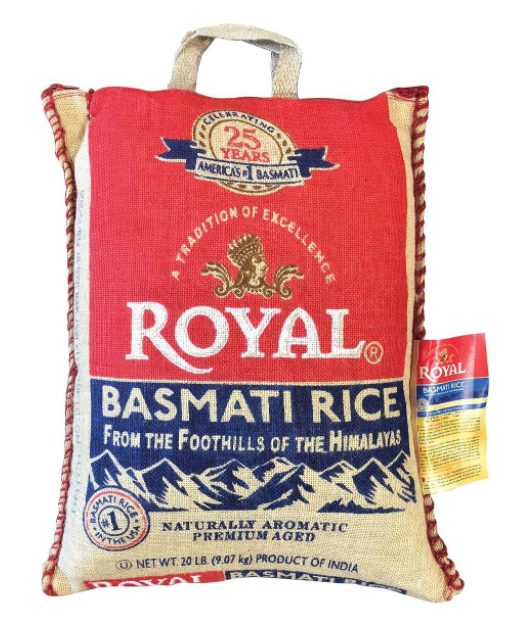
Royal White Basmati Rice is our best pick for basmati rice as it offers an authentic taste and texture for all sorts of South Asian and Indian dishes while being vegan, gluten-free, and kosher for use in all kinds of diets.
Royal White basmati rice is grown and harvested in India from local growers who make it their art to care for their crops. The quality is certainly premium and, though it’s not organic, it is non-GMO.
It’s aged with expert level precision in temperature-controlled silos, a quality few people would ever think to ask about their rice, but it turns out it’s highly important. Aging basmati rice, not unlike a fine wine, brings out the flavor of the grain.Furthermore, the aging process makes sure you won’t have a sticky texture every time you prepare it.
Comes in various sizes between 15 and 20 pounds in packs of one, two, three, or four. This type of rice is often used in stir-fries, curries, and pilafs, but can also be enjoyed as a side dish all on its own.
While the rice itself is a premium quality, the biggest concern with this product is its occasionally faulty packaging. This is not uncommon in the rice industry, or even for Amazon sellers in general, but it’s generally the only complaint lodged against this rice.

#2. Pride of India Extra Long Indian Basmati Rice
($14.99,1.5 kg, Get Up To 4% Cash Back with Walmart )
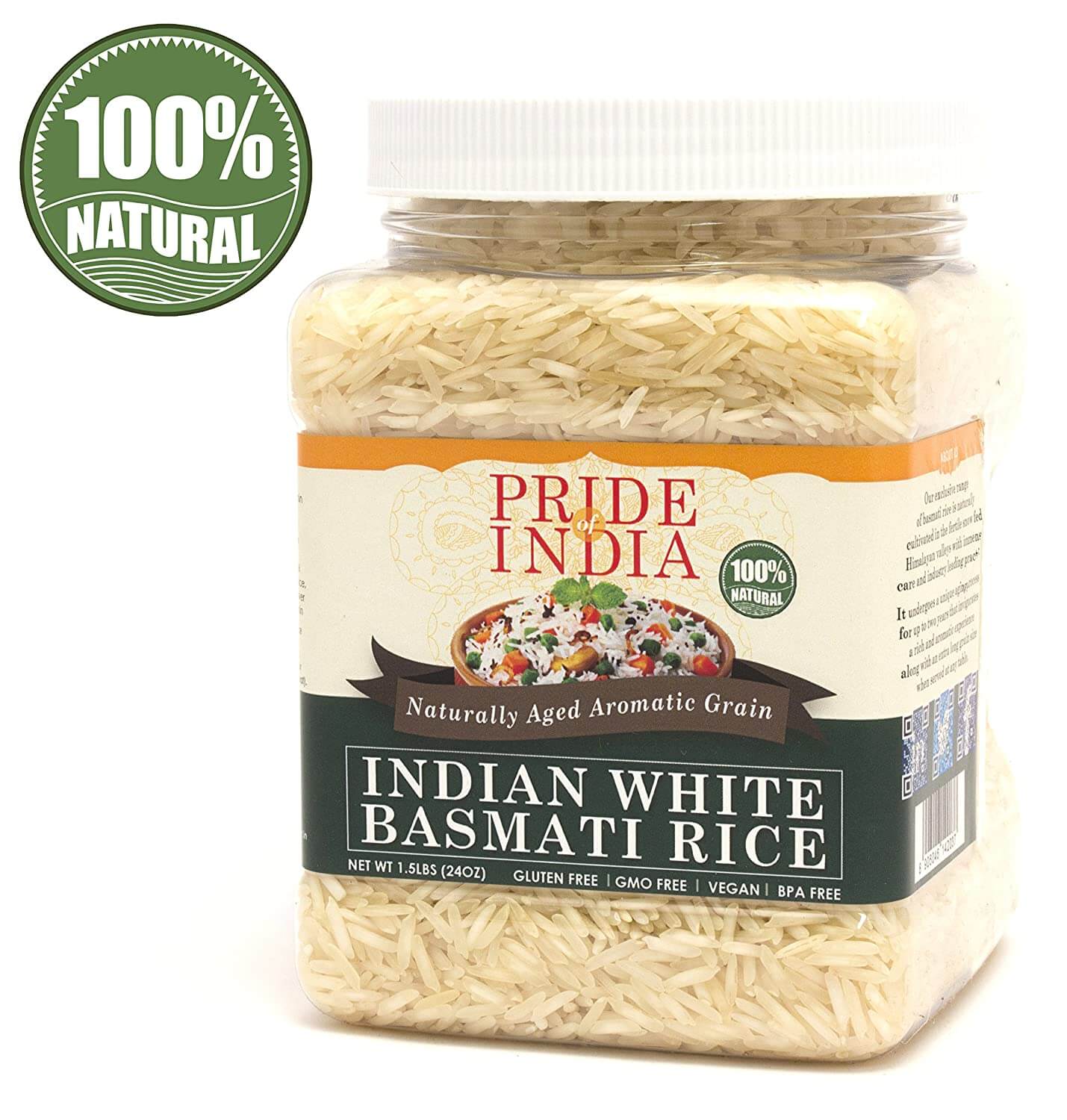
Basmati literally means “fragrant” in Hindi, so it should go without saying that one of the markers of a great brand of basmati rice should be a pleasing aroma.
The most aromatically pleasing basmati rice currently on the market is the Pride of India – Extra Long Indian Basmati Rice. If you are a basmati connoisseur you may already understand that aging the rice carefully is what allows the nutty flavor and aroma to really establish in the rice.
Pride of India ages their basmati for 2 years, and the result is very worth it. It’s grown in the foothills of the Himalayas which, we believe, adds to the natural flavor and aroma simply by being the fertile rice ground that it is.
This brand grows their rice without chemicals or pesticides, which also protects the natural earthiness of the rice, making it no wonder it is called the Pride of India.
The end result is a truly exotic smelling and tasting basmati rice that brings true Indian quality to curries and dishes like biryani or pulao.
Overall, you can tell this product is attractive when you lay your eyes on it, mainly because of its particular and beautiful packaging design.
Though it’s not immediately obvious on the sales page, this rice should be rinsed and soaked before cooking it, which does add a little bit of extra time. The Pride of India Basmati rice may not be as strong as expected compared to the Royal.
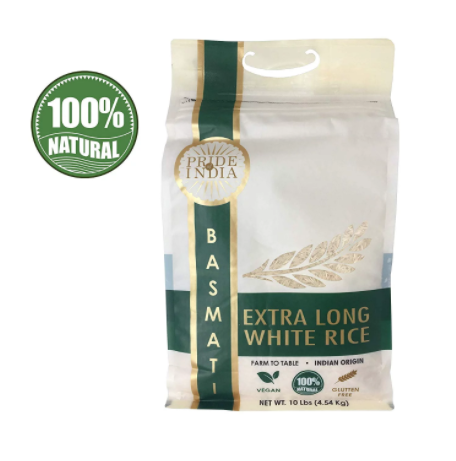
#3. Daawat Ultima Extra Long Grain Basmati Rice
($25.86,10lbs, Amazon)
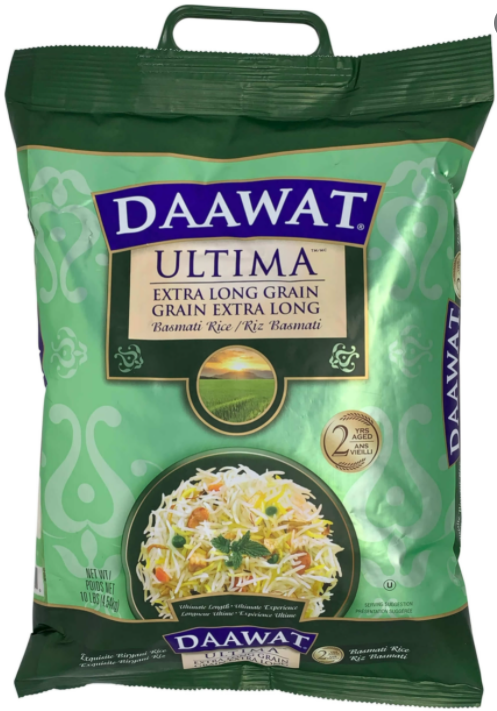
Daawat presents the best basmati rice specially made for everyday cooking.
Daawat was one of the first brands to hit the list when it came to good basmati rice. It was established in 1984 and is now owned by LT Foods, which manufactures and sells it.
Daawat Basmati not only has a great reputation in India, but also has a large customer base in many other countries.
They are very fluffy and separated when cooked, and the snow-raised snow-raised Himalayas nourish this raw basmati. Dawaat rice comes in different varieties such as Daawat Super Basmati rice, Biryani rice and Super basmati rice. These are classic varieties that double in size when cooked.
Daawat Basmati Rice is imported from India and is one of the longest aged rices in our range. Its grains are the longest after cooking, remaining slender and intact rather than broken.
Its texture is fluffy, smooth and firm - no matter how we prepare it, it's not too soft. One of the more aromatic rices in the lineup, Daawat Basmati contributes its own subtle flavor and fragrance to the dish, while the rest of the offerings are just a blank slate.
At about $1.80 a pound, it's also one of the most affordable.
Daawat Ultima rice is a long-grain basmati that comes in a single package of 10-pounds or can be bought in bulk at up to seven packages at a time.
It has one of the longest grains of all the different brands but otherwise doesn’t have any features that stand out prominently.
Though it states it is aged for 2 years, it doesn’t seem to be as aromatic as some of the other premium brands.This basmati rice brand features very long and fluffy grains with a mild taste and fragrance that will not overpower any spices in your dish.
#4. India Gate White Basmati Rice
($24.99, 10LBS, Get Up To 4% Cash Back with Walmart )

It is one of the Top best basmati rice brands in India and they are perfect for making pilaf and biryani.
India Gate has always been the go-to choice for millions of Indians when it comes to premium basmati rice.
Many regions of the country use this brand to make biryanis. Delve into the delicious aroma of India Gate's Basmati Rice, which is soft in texture and authentic in taste.
It is owned by KRBL, one of the largest rice companies in the world. The founders of KRBL, brothers Khushi Ram and Behari Lal, started the brand journey in Lyallpur in 1889.
The brand is the largest exporter in Asia, Middle East, Europe, USA, Canada and Africa. It works with all foods because it comes in different varieties. It is one of the regular choice brands for medium and long grain shredded and whole basmati rice.
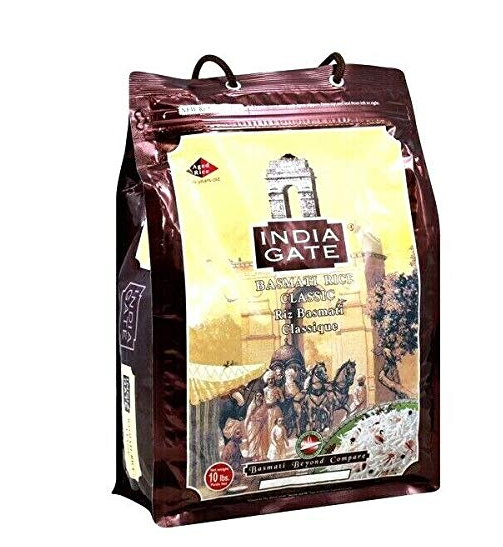
Types Of Basmati Rice In India:
1. Pusa Basmati Rice- 1121
If you’re looking for rice that’s perfect for everyday cooking, look no further than Pusa Basmati 1121. This rice is grown in the foothills of the Himalayas and has a long, slender grain that’s ideal for absorbing flavors. The taste is smooth and delicious, and the grains are translucent and delicate.
2. Pusa Basmati Rice- 1
In Indian culture, rice is a staple food that is eaten with every meal. However, not all rice is created equal. Pusa Basmati Rice is an organic, hand-picked rice that is known for its long grains and fragrant aroma. Unlike other rice, Pusa Basmati Rice is never treated with pesticides or chemicals, which makes it a healthier choice for those looking to avoid these substances. Pusa Basmati Rice is available in both white and brown varieties.
3. Basmati Rice 217
Basmati rice is a popular rice variety from India. This rice is well-known for its distinctive, nutty flavor and delicate, fluffy texture. When cooked, the grains remain separate and maintain their shape. The rice has a higher nutritional value than other varieties, with more fiber and protein.
4. Ranbir Basmati Rice
This basmati rice is quite famous among the locals as it tastes good and comes in an affordable price range. Ranbir rice is long basmati rice that grows in the foothills of the Himalayas. The grains are long and slender, which makes them easy to cook and less likely to stick together.
5. Taraori Basmati Rice
Taraori Basmati is a 100% Organic, Non-GMO, and Kosher Rice. It is long grain rice with a medium-grain texture. This aromatic rice is also low in fat and cholesterol. Taraori Basmati rice is grown in the foothills of the Himalayas and has a natural sweetness. Taraori Basmati rice is grown without the use of pesticides or chemicals and is naturally aged for a minimum of two years.
FAQs
What are the best selling basmati rice brands in India?
Daawat, Kohinoor, Shrilalmahal, India Gate, and Fortune are some of the best selling basmati rice brands in India.
Which country has the best basmati rice in the world?
India is known as one of the largest producers of basmati rice in the world and has some of the best varieties found worldwide.
Can you make risotto with basmati rice?
Risotto is traditionally made with Arborio rice, which is a short-grain, starchy rice that is almost the exact opposite of basmati rice. Basmati has a long grain and it leans towards the dry side of the rice spectrum, rather than the sticky, creamy side.
Of course, if you cook your rice with plenty of liquid and let it simmer longer than basmati normally cooks, 20–25 minutes instead of the standard 15, the result will be creamier.
The grains are too long to be a true risotto, but you can develop the right flavor with careful attention to your details.
Is basmati or jasmine rice better for fried rice?
Though both rice varieties are both good for fried rice, there are differences in texture, size and flavor. Jasmine rice, of Thai origin, is a shorter grain than basmati rice, which is of Indian/Pakistani origin. Both rices are beloved for their fragrant aromas and flavors. Jasmine rice cooks up stickier, in clumps, whereas basmati rice tends to cook up as dry, individual grains that do not stick together.
When used to make fried rice, jasmine rice may beat out basmati rice because of its ability to crisp up without breakage. Because basmati is a longer, drier, less starchy grain, it tends to break when stir-fried.
One other characteristic to keep in mind is that both rices are not totally neutral in flavor and aroma. You may want to choose complementary sauces or mix-ins—look to their cuisines of origin for inspiration.
Rice from China (中国大米)
China is the world’s top producer and consumer of rice. It produces and consumes a third of the world’s rice, about 200 million tons a year.
As the staple food for more than half of the world's population, rice is directly consumed as cooked rice(饭,fan) which is flavored with meat and vegetables, and made into flour, wine, cakes, vinegar, milk, flakes, noodles, paper, and tea. Rice lined up in supermarkets varies in color (white, brown, black, red), shape (short, medium, long), aroma (jasmine, Basmati, Calrose), stickiness and culinary preferences.
There are different rice growing regions in China, and there are obvious north-south differences. One sentence summary: Chinese in the south like to eat indica rice, while the Chinese in the north like to eat japonica rice.
Types of Chinese Rice:
Indica Rice (籼米)
Indica rice is traditionally grown in tropical to sub-tropical climates (near the equator), including Philippines,Thailand, Vietnam, India, Pakistan, Sri Lanka, Indonesia, central and southern China, Africa and Southern US.
Indica rice grains are slender or oblong, and the length of the elder is more than 7 mm. After cooking, the rice yield is high, the viscosity is small, the rice quality is brittle, and it is easy to break during processing. The color is white and transparent, and there are also translucent and opaque.
In the international market, indica rice is divided into long-grain rice and medium-grain rice according to the length.
Long grain rice is slender in shape, and the ratio of length to width is generally greater than 3. Crispy, oily, soft, tough and not sticky after cooking. The taste is delicate and delicious, and it is the best quality among indica rice.
Qimei, Simiao produced in Guangdong Province of China and American blue crown are all long-grain rice.
Medium-grain rice is slightly thicker than long-grain rice, with an aspect ratio between 2 and 3, generally translucent, with more white belly.
Because it is more powdery, it tastes rough. The quality is not as good as long grain rice.
The rice produced in Hubei, Hunan, Guangxi, Jiangxi, Sichuan and other provinces of China is mostly medium-grain rice.
U.S. chines are also medium-grain rice.
Japonica Rice (粳米)
Japonica rice is usually grown in temperate and mountainous climates, including Northen China, Korean, Japan and California.
At retail in the United States, japonica rice is labeled as medium grain rice or short grain rice, but not "Japonica Rice".
The grains of japonica are generally oval or round. The rice grains are plump and thick, the cross section is nearly circular, the ratio of length to width is less than 2, the color is waxy white, transparent or translucent, the texture is hard and tough, the viscous and oily properties are high after cooking, soft and delicious, but the rice yield is low .
Japonica rice is mainly produced in North China, Northeast China and Sihong, Jiangsu. The famous Xiaozhan rice and Shanghai white japonica rice are all excellent japonica rice.
Glutinous Rice (糯米)
Glutinous rice, also known as Jiangmi, is milky white, opaque, transparent after cooking, with high viscosity and low swelling.
It is generally not used as a staple food, and is mostly used for making cakes, dumplings, dumplings, etc., as well as raw materials for winemaking.
It is grown throughout Asian and is included in both japonica and indica types of rice, that is, there are short-grain, medium-grain and long-grain glutinous rices.
Among the above three kinds of rice, indica rice and japonica rice are particularly important, and the trade volume of indica rice is the largest.
Southeast Asia, Africa and Latin America mainly consume indica rice, especially long-grain rice.
People in Japan, North Korea, Italy and other countries like to eat japonica rice.
In Europe, both indica and japonica are consumed.
What Kind of Rice Should be Recommended?
Unlike Japan and Thailand, China’s rice brand awareness is weak. There may be rice from different places or different kinds of rice from the same place in the same brand. People often distinguish the type and quality of rice by its producing area.
Therefore, buying Chinese rice mainly depends on the place of origin or variety, just like buying Chinese Longjing Green Tea. The word Longjing is a place name, not a brand. Here are some favorite rice producing areas for Chinese consumers.
#1. Fulinmen Aromatic Medium Grain Rice
($32.99, 11 lbs, Get Up To $10 Cash Back with SayWeee)

Wuchang rice, a medium grain japonica rice which is one of best rice of China grown in Wuchang, Heilongjiang. Wuchang rice is extremely aromatic,soft, slightly sweet and slightly sticky.
#2. Arawana Brand Panjin Rice
($17.99, 11 lbs, Get Up To $10 Cash Back with SayWeee)
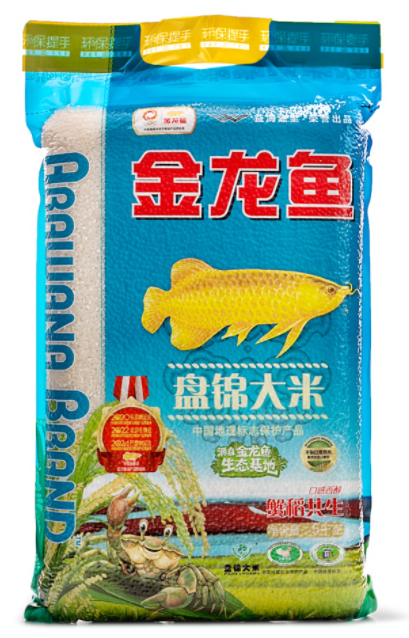
Panjin rice is produced in Panjin City, which is located in the southwest of Liaoning Province, the center of Liaohe Delta.
There are four distinct seasons here, with rain and heat at the same time. Farmers raise crabs in rice fields to form an ecosystem, which makes Panjin rice soft and delicate.
#3. Pearl
It originates from a high-quality rice production area of Northeast region and grows on the fertile black soil. The grain is shiny like jade, oleosus and bright, while the cooked rice is white like snow, glutinous and transparent, fragrant and chewy.
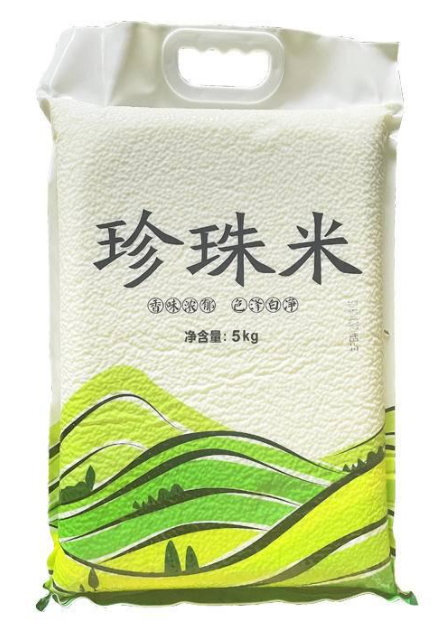
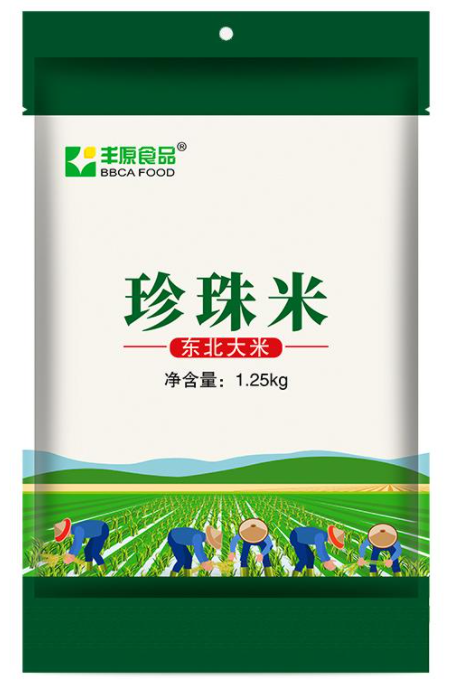

Sticky, short-grain types from the japonica family are most closely associated with Taiwanese and Japanese styles of rice.
A short grain japonica rice grown in Northeast of China, comparable to premium short grain rice of Korean.
Due to its sticky and compact consistency, dishes like sushi rolls or rice pudding often use pearl rice for this reason. It can also be formed into balls and fried for an appetizer or side dish.
In Hong Kong, they are often grouped under a single name, “pearl” rice, for the translucent pearly sheen and round shape. While also grown in southern China, it is unlikely that it is a traditional cultivar of the region.
#4. Zengcheng silk rice
Called si miao in Putonghua (see mew in Cantonese).
Zengcheng silk rice is a kind of indica rice, which is an excellent rice species derived from Zengcheng wild rice. Its rice grain is slender and shiny, so it is called silk rice. In the Qing Dynasty, it was regarded as the best rice variety at that time and was known as “Rice Jasper”.
Silk Rice is chewy, fragrant, and the grain is loose and dry. If you stirring cooked silk rice with soup water, you will see the rice ball spread out, and the soup is still crystal clear and uncloudy, which is the best choice for claypot rice.

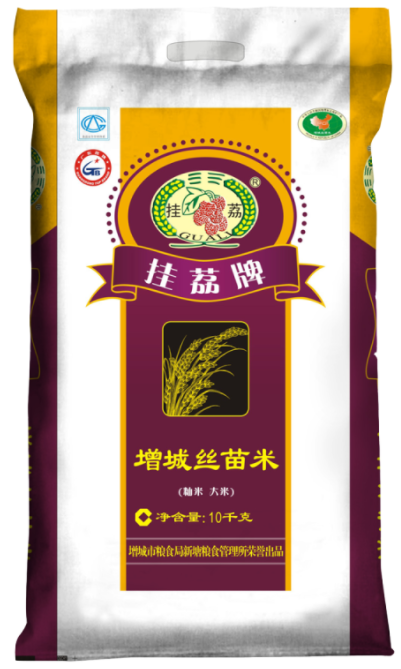
#5. You zhan
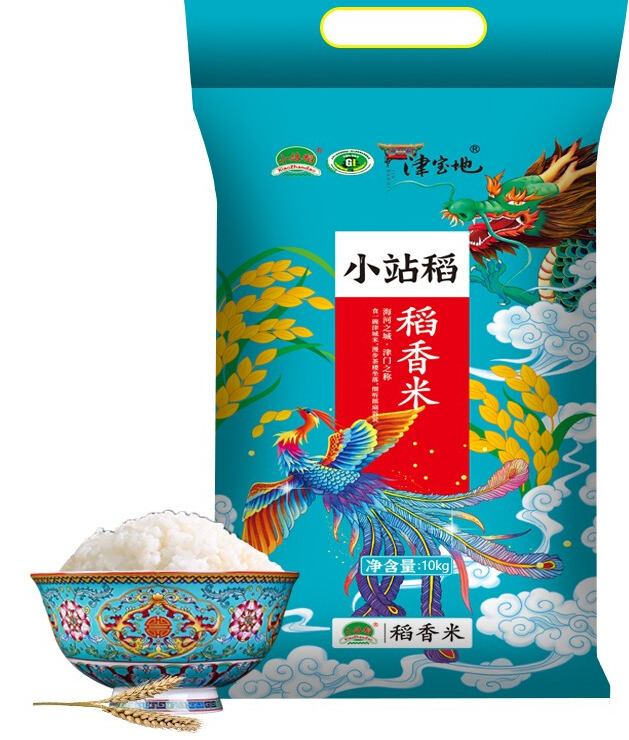
Known for its glossiness, you zhan, meaning oil rice, has a slightly higher fat content and leaves a sheen in whatever vessel it was cooked. Part of the indica family, it is a medium-grain variety, and the cooked rice has a bit of bite. For many cooks, you zhan is the preferred type for congee – it yields a more velvety texture. Because the grain is traditionally produced in smaller quantities, it fetches a higher price. The variety has given rise to numerous hybrids, and this lineage is often noted with the word “zhan” in the name.
#6. LiuLin Rice
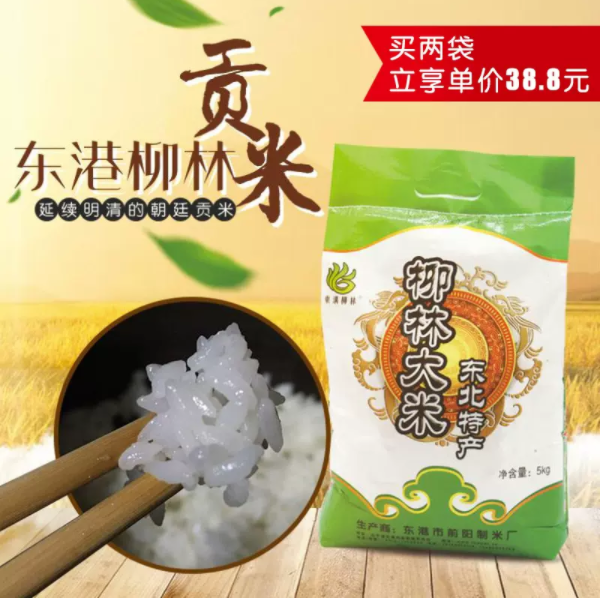
Liulin rice is produced in Liulin Village, Donggang City, Liaoning Province, which is close to the Yalu River and the Yellow Sea. Farmers use a mixture of fresh water from the Yalu River and salt water from the Yellow Sea to give Liulin rice a unique flavor.
Here, in addition to planting Chinese native varieties of japonica rice, but also grow Japanese varieties of japonica rice “Koshihikari”. The Koshihikari Rice produced here is one of the few rice that can compete with Japanese origin in quality.
Korean Rice
Korean rice has a slightly sweet taste that many love, and it is also known for being very sticky and easy to eat. Additionally, Korean rice contains nutrients like vitamin B1, iron, and potassium and is also a good source of fiber and protein.
Top 2 Best Korean Rice Brands 2025
#1. NongHyup Cheorwon Odae White Rice
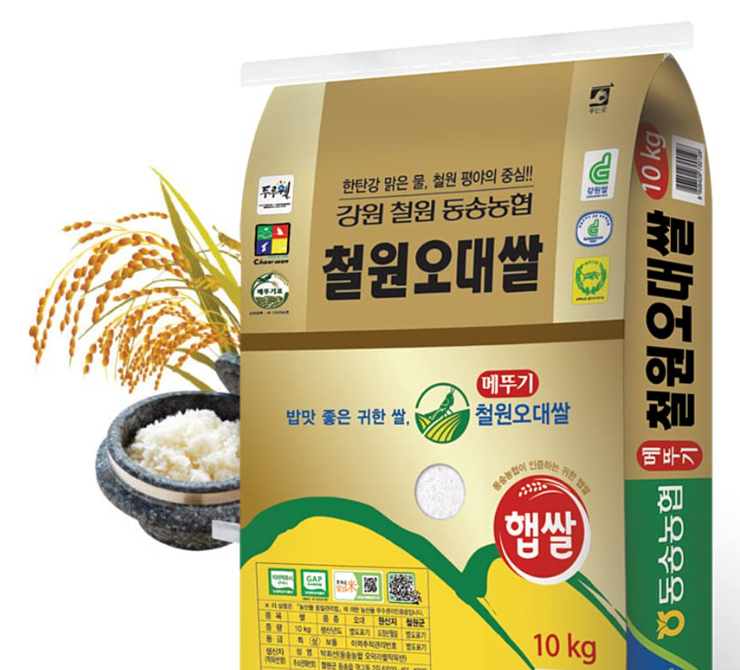
Cheorwon Odae Rice has been recognized in the 2020 and 2018 National Brand Award Rice Category, the 2016 Korea Luxury Brand Award for Regional Agriculture Products Rice Category, and the 2011 President’s Award for High Quality Rice Production and Distribution.
#2. Chosun Market Organic Golden Queen No. 3 White Rice
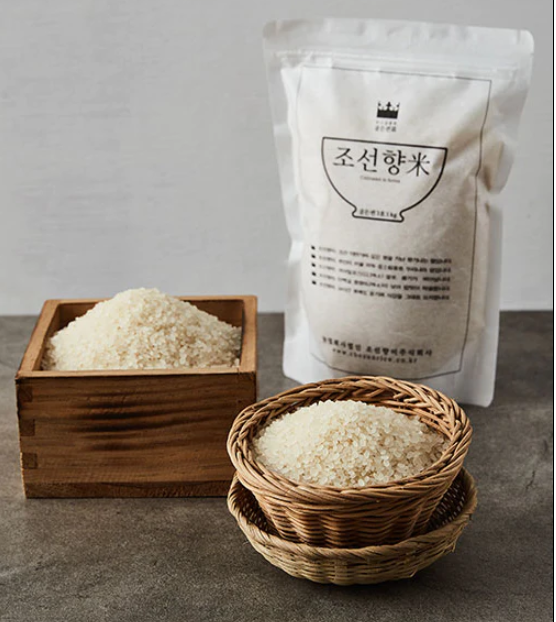
Golden Queen Rice is famous for three things: First, as mentioned, it gives off an aromatic popcorn smell. Second, it's regarded as one of Korea's highest-quality rice. Third, the chewing texture and taste of the rice remains the same for up to 24 hours after cooking.
Other well-known rice varieties in Asia
Black Rice From Across Asia
Known as “forbidden rice” in Chinese, the naturally jet black rice started out as an antidote for kidney, stomach and liver problems until noblemen in ancient China seized control of the rice. The revered grains were later made available only to the royal family and the upper crust of society. Denser and plumper than brown rice, the grains have a nutty and slightly sweet flavour.
Black rice is chock-full of nutrients — the bran hull of grain is high in antioxidants and it contains anthocyanins that maintain healthy cholesterol levels and is a good source of fibre, iron and vitamins. Some popular black rice dishes include black rice pudding and Chinese black rice cake. Black rice is also eaten with greens and meat.
Broken Rice (Com Tam) From Vietnam
Most people consume whole and complete rice grains. Not the Vietnamese, who have found novel ways of using broken, imperfect grains of leftover white rice from the drying and milling processes of rice production.
Instead of throwing away these smaller grains, they have made the Com Tam a essential part of their cuisine. The broken rice was considered a staple among poor labourers as they were made available cheaply. These days, the rice is widely eaten by all Vietnamese. Its taste and texture is similar to normal rice, just that its size is smaller. Com Tam is served with dishes such as marinated grilled pork chop (suon nuong), cha ca (deep-fried fish patty) and cha trung (steamed egg with pork).

Extrabux is an international cashback shopping site, offering up to 30% cashback from 10,000+ Stores!
Squarespace, SkinStore, MATCHESFASHION, The Wall Street Journal, NordVPN, Visible, Armani Exchange, Sam's Club, PUMA, AliExpress, Card Cash, NET-A-PORTER, Udacity, Udemy, Selfridges, LOOKFANTASTIC, Vimeo, Coach Outlet, lululemon, PrettyLittleThing, Booking.com, Ripley's Aquarium, iHerb, Groupon, etc.
Join to get $20 welcome bonus now! (How does Welcome Bonus work?)
Recommendation
-

Is Turkish Airlines Good for International Flights?
-

10 Best & Stylish Winter Coats for Women on NET-A-PORTER in 2025
-

Top & Best 12 Sneaker Apps/Websites for Raffles, Releases & Restocks in 2025
-

7 Best Gift Card Exchange Sites - Buy, Sell and Trade Discount Gift Card Safely and Instanly!
-
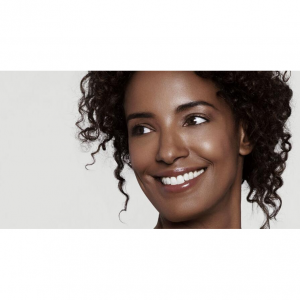
Top 9 Professional Skincare Brands for Licensed Estheticians 2025

